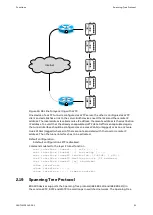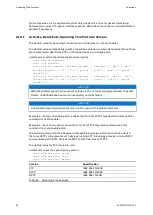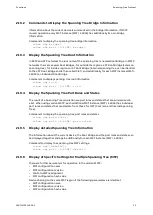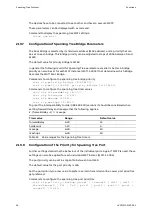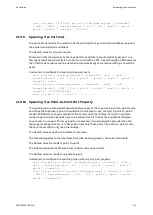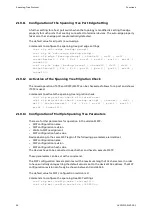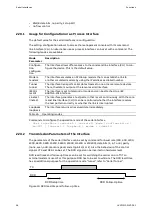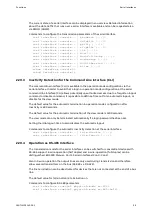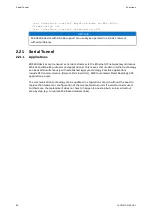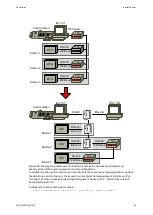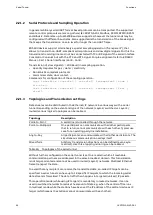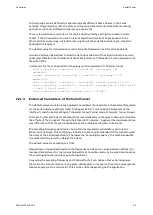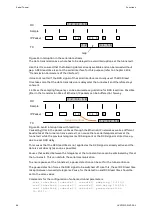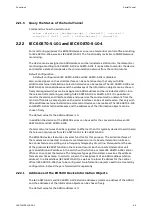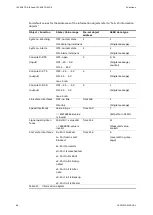
Functions
Spanning Tree Protocol
Internet
Figure 18: DSL line to layer 2 ring with L2TP
One device of a L2TP tunnel is configured as L2TP server, the other is configured as L2TP
client and establishes a link to the server. Both devices need the local and the remote IP
address. The local address is called source IP address, the remote address is the destination
IP address. To avoid that the already encapsulated L2TP data traffic is encapsulated again,
the tunnel interface should be configured as an access VLAN (untagged) or as one or more
trunk VLANs (tagged) where all of them are not associated with the local or remote IP
address. Then the tunnel interface has to be activated.
Default configuration:
In default configuration L2TP is disabled.
Commands related to the layer 2 tunnel function
< s e t i n t e r f a c e { t u n n e l . . . } r o l e { . . . } >
< s e t i n t e r f a c e { t u n n e l . . . } s o u r c e - i p { . . . } >
< s e t i n t e r f a c e t u n n e l 0 t r u n k - v l a n { { 1 - 4 0 9 4 } | a l l } >
< s e t i n t e r f a c e t u n n e l 0 d e s t i n a t i o n - i p { I P a d d r e s s }
< s e t i n t e r f a c e t u n n e l 0 [ n o ] s h u t d o w n >
< s h o w i n t e r f a c e { . . . } >
< s h o w i n t e r f a c e { . . . } f r a m e - c o u n t e r s >
2.19
Spanning Tree Protocol
EDS500 devices supports the Spanning Tree protocol (IEEE 802.1D and IEEE 802.1Q) in
the versions STP, RSTP and MSTP to avoid loops in switched networks. The Spanning Tree
1KGT151021
V000 1
51















